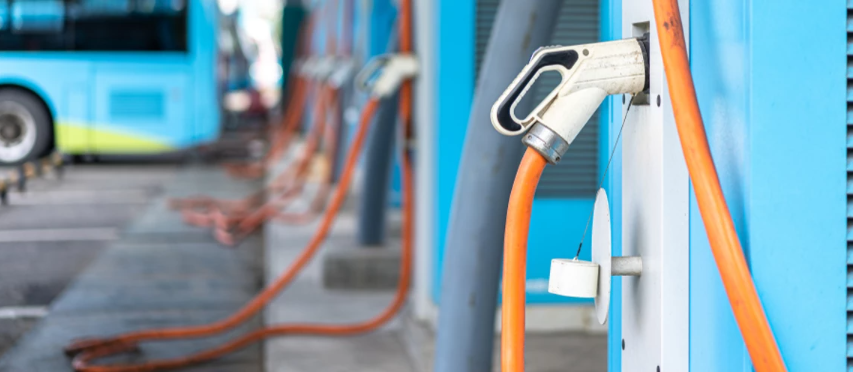On a busy morning in Kigali, commuters waiting at Nyabugogo Bus Terminal usually think about one thing: getting to work, school, or back home. Behind the scenes, Rwanda is preparing for a transformation that will change how these and thousands of other people move across the city and how electricity powers that movement.
Rwanda has set its sights high. By 2030, one in five buses will be electric. By 2050, the fleet could grow to more than 4,100, with Battery Electric Buses (BEBs) leading the way. BEBs are already operating in Kigali, and more are expected in the near future. For the country, it is more than a transport upgrade, but a step toward cutting emissions, improving the quality of urban life, and unlocking wider benefits such as new jobs.
However, ambition must align with reality, as electrifying transport presents significant energy challenges. A new World Bank study, conducted under the Rwanda Urban Mobility Improvement (RUMI) Project with the support of ESMAP and the QII Partnership, examines what it will take for the country’s power system to achieve its E-Mobility goals.
A grid under pressure
Kigali’s electricity network already operates close to its limits. By 2024, maximum line loading exceeded safe levels, reaching 136 percent. Without upgrades, this number could nearly double by 2030 once BEBs and other electric vehicles (EVs) are factored in. At the same time, Rwanda’s overall electricity demand is expected to grow by about 10 percent each year, which is ten times the impact of EV adoption.
This means the shift to BEBs cannot be planned in isolation. Power lines, transformers, and substations must be upgraded to keep the lights on and the buses moving. Smart charging strategies, such as shifting charging to off-peak hours or aligning it with solar generation, can help ease the strain. Simulations indicate that these approaches can reduce stress on the network by up to 15 percent.
Charging ahead
Behind every BEB is a charging station. Rwanda already has a handful of fast chargers, 120 to 160 kW units capable of powering fleets overnight. But scaling up requires a clear roadmap.
Our study recommends adopting dual international standards, specifically the Combined Charging System Type 2 (CCS2) and GB/T, to ensure flexibility. This approach enables the development of data-driven systems to track EV uptake in real-time, and introduces time-of-use tariffs that encourage drivers to charge when the grid is least stressed. In Kigali’s dense neighborhoods, even the shape of charging curves matters, since uncoordinated charging could overload local networks if not managed carefully.
A new kind of bus terminal
Perhaps the most visible sign of this transformation will be the upgraded Nyabugogo multi-modal transit hub. With 18 chargers, an 800-kW rooftop solar photovoltaic system, and battery storage, the hub will serve as both a transportation node and an energy innovation site. The investment, estimated at $7.7 million, will demonstrate how decentralized energy can support E-Mobility while reducing reliance on polluting fuels.
Other potential hubs in the Central Business District, Remera, Kimironko, Nyanza, and Kabuga are strategically located to connect thousands of commuters with clean transport options, while minimizing costly grid reinforcements.
Financing the transition
The transition will not come cheaply. Rwanda estimates that up to $900 million will be needed for EV purchases and charging infrastructure. Meeting these needs will require public-private partnerships, green bonds, blended finance, and the support of institutions such as the Rwanda Green Fund (FONERWA).
The World Bank is playing its part in supporting Rwanda lay the foundations for E-Mobility. Beyond direct investment, the Bank is contributing to design financing models, providing technical assistance, and bringing partners together. The combination of public support and private capital will be crucial in mobilizing the scale of financing required to make E-Mobility viable and sustainable.
Encouragingly, private sector players are already active. Companies such as BasiGo, IZI, Ampersand, and Spiro are piloting business models for BEBs, electric motorcycles, and charging solutions.
Building the rules of the road
Beyond infrastructure and finance, Rwanda’s E-Mobility shift will require a unified policy framework. Today, the Ministry of Infrastructure, and the various agencies including the Rwanda Utilities Regulatory Authority, and the Rwanda Energy Group, play important roles. But more coordination is needed. A dedicated working group across sectors could further align efforts and ensure policies move in the same direction.
Standards for batteries and recycling also need to be strengthened. As more EVs enter Rwanda’s streets, so too will end-of-life batteries. Regulations, extended producer responsibility schemes, and investments in recycling will help turn this challenge into an opportunity.
The road ahead
The path is clear. Rwanda’s energy and transport futures are intertwined. With the right policies, investments, and planning, the country can achieve its E-Mobility ambitions while maintaining a stable and sustainable grid.
The benefits for the daily commuter boarding a bus at Nyabugogo will be simple: cleaner air, quieter streets, and more reliable service. For Rwanda, it means charging ahead toward its vision of growth and transportation.
For more on Rwanda’s journey, see the World Bank report Exploring Enabling Energy Frameworks for Electric Mobility in Rwanda, and the press release Building the Energy Foundations for Rwanda’s Electric Mobility Transition.
For broader lessons on how E-Mobility affects power systems in developing countries, read the World Bank blog on solutions to mitigate E-Mobility’s power system impacts.
Source: blogs.worldbank.org



